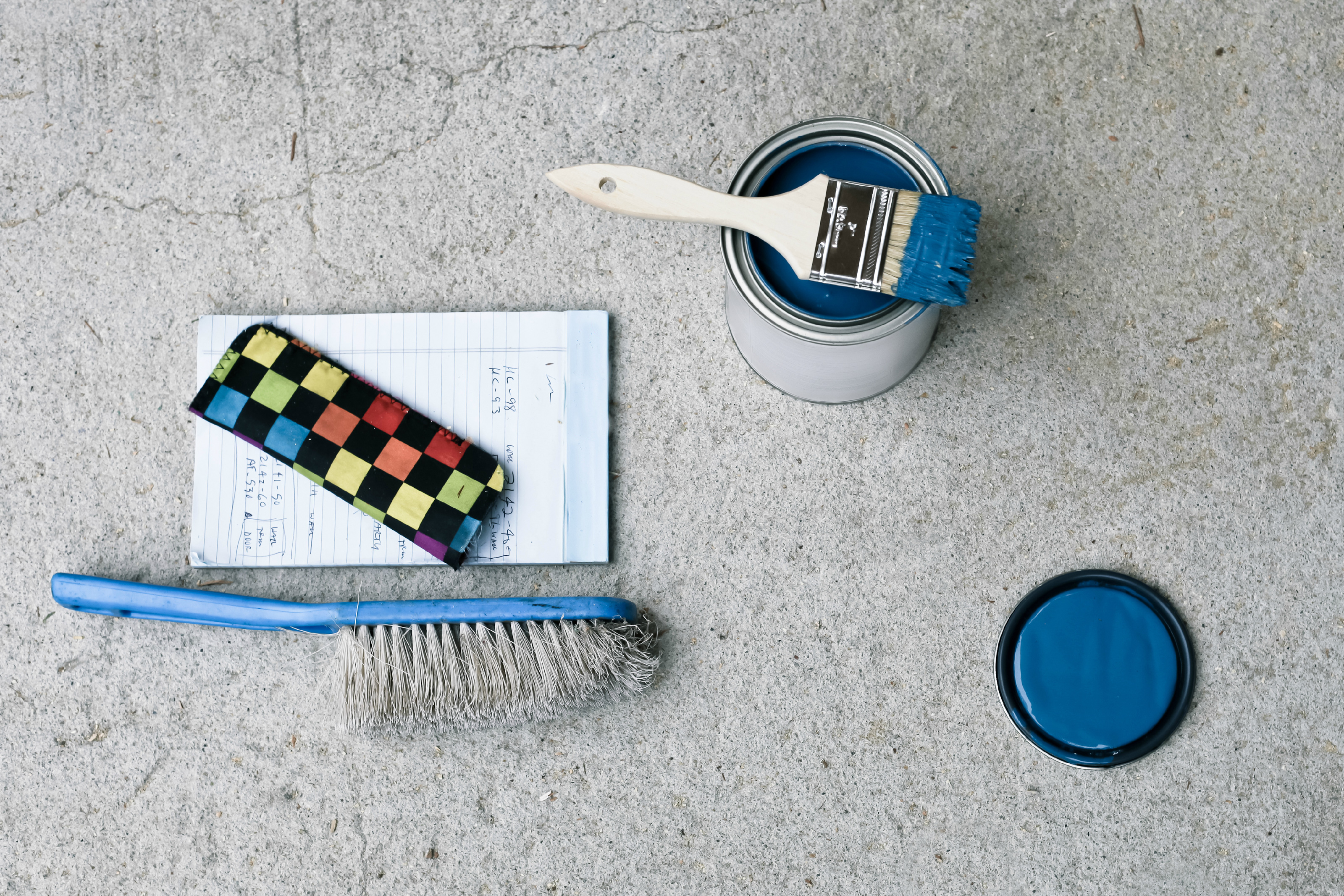
Painting concrete surfaces requires more skill, tools, and time than throwing a coat on drywall. Here’s how to do it right.
Concrete painting is trickier than painting most surfaces: It breathes, transports moisture, and sucks up paint.
While you can paint drywall in a day or two, you’ll need a week or more to finish painting concrete. Continue reading below for tips — plus costs — on how to paint concrete surfaces:
1. Clean the Concrete
Cleaning concrete is a vital first step because the porous surface tends to trap dirt, grease, and oil.
1. Remove dirt and grease with trisodium phosphate ($6.30 per quart concentrate), or choose a more Earth-friendly cleaner like Krud Kutter’s pre-paint cleaner ($10 for 32 ounces).
2. Yank off vines and moss growing on the foundation. Use a pressure washer to finish off remaining roots and dirt.
3. Remove efflorescence, a white powder that forms on moist concrete. Try Krud Kutter Concrete Clean & Etch ($8.50 for 32 ounces); if you need more cleaning muscle, try phosphoric acid masonry cleaner ($27 per gallon).
2. Strip Old Paint
Strip peeling or blistering paint indoors with a wire brush ($3 to $5), a paint scraper ($10 to $20), and lots of elbow grease.
Outdoors, get rid of old paint with a power washer (rents for $40 to $75 per day).
3. Seal Interior Concrete
Water moves easily through porous concrete, so sealing interior walls is necessary to prevent moisture from seeping in, promoting mold growth and that cold, damp basement feel. Use a masonry sealer, such as ThoroSeal, that also patches cracks ($35 for a 50-pound bag).
Carefully follow directions for mixing, applying, and curing the sealer. ThoroSeal, for example, requires two coats; the manufacturer recommends curing for five to seven days before applying the second coat.
4. Prime the Concrete
Concrete primer, called block primer, fills pores and evens out the surface. For exterior foundations and walls, use exterior-grade block filler, such as Behr’s Concrete and Masonry Bonding Primer, which also is good for interior concrete ($17.98 per gallon). Primer dries in two hours; wait at least eight hours, but no more than 30 days, to paint.
5. Paint the Concrete
Masonry paint (also called elastomeric paint or elastomeric wall coating) is a good choice for concrete painting because it contains binders that contract and expand with the concrete. Exterior house paint can crack and peel on concrete.
Masonry paint ($20 per gallon) can be tinted and is much thicker than exterior paint. Apply it with a masonry brush ($5 to $8), a high-capacity (3/4-inch or higher) roller, or a texture roller ($5.50).
Some masonry paint is thicker than exterior paint and contains fine particles that can clog air sprayers. If you want to spray-paint cement, ask your local paint store for a product that will work well in a sprayer ($300).
No matter how you apply paint, let it dry for a day between coats. You’ll probably need two to three coats, so check the long-range weather forecast before you begin.
Related:





